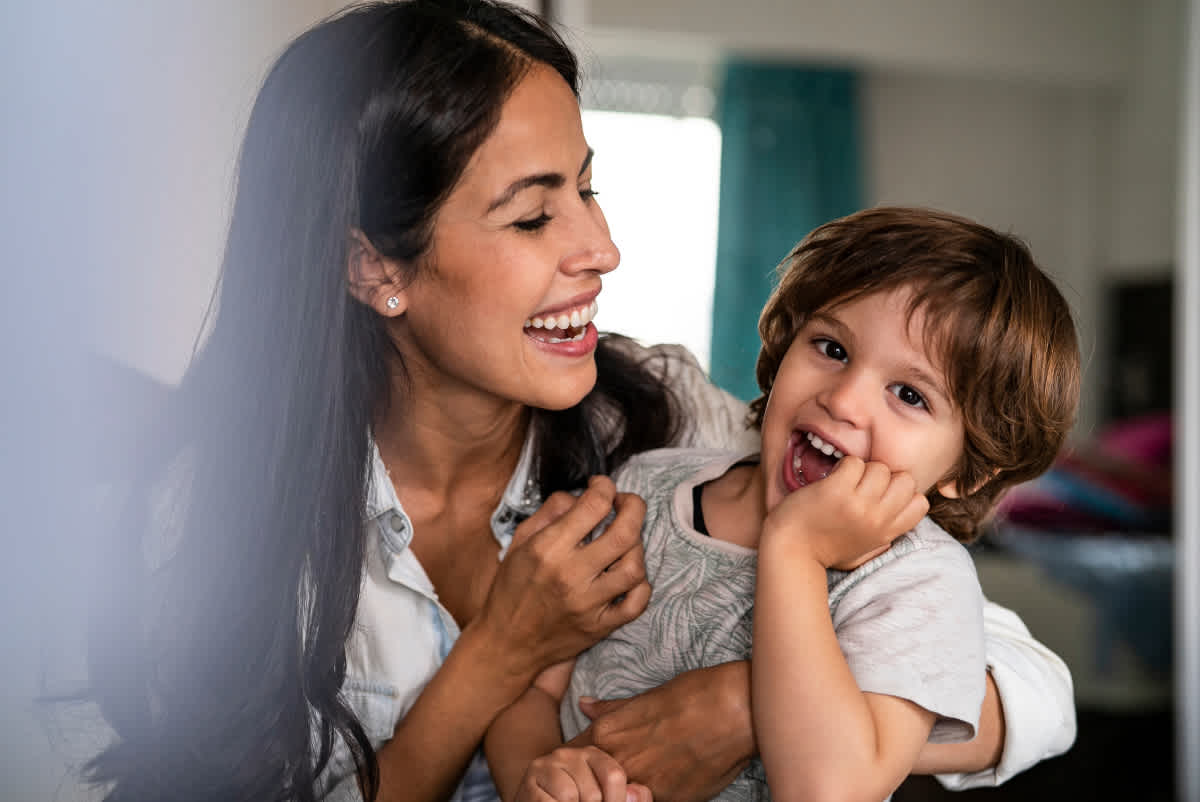How to deal with anxiety and panic attacks in young children – a guide from Nathan Wallis
What causes panic attacks in children?
Anxiety is a normal part of life and many children will experience it at some point. The triggers for their anxiety will depend on their age and experiences – such as anxiety around starting school for primary aged children.
One way anxiety can manifest is through panic attacks. Panic attacks are intense feelings of anxiety that usually last between one to ten minutes with sudden onset and end. During a panic attack, people often feel like they’re losing control, with physical symptoms like a racing heart or struggling to breathe. Although panic attacks aren’t life-threatening, they can feel that way and be very scary.
How to spot the signs of a panic attack
Your child might not realise they’re having a panic attack – especially if it’s their first time – so it’s super important for you to spot the signs so you can help them through it. Your child might become visibly anxious or overwhelmed, but they might also be experiencing other physical symptoms that are harder for you to spot.
Common signs include:
- Heart beating quickly
- Shortness of breath or difficulty breathing
- Feeling like they’re choking
- Sweating
- Shaking or trembling
- Chest pain
- Feeling like they’re going to throw up
- Dizziness or feeling like they’re going to faint
- Tingling
- Chills or hot flashes
- Feeling that things are not real, or like they’re watching themselves in a movie
- Fear of losing control or “going crazy”
- Feeling like they might be dying
Some of these will be visible but you may need to verbally or physically check some of the less obvious symptoms, that your child may not be able to communicate, such as chest pain or a stomach ache.
What to do when your child is having a panic attack
Talk to them – Just talking and being sympathetic to what they’re experiencing can help them manage their symptoms. You might say, “I’m here for you, do you want to talk about what you’re feeling?” Or if they aren’t ready to communicate, you could say “I’m here when you’re ready to talk about it”.” If they don’t want to talk yet, ask, “How can I help?” By asking them what they need, you can help them to feel more in control.
Let them know they’re safe – Reassure them that they are safe and that the panic attack will soon be over. This can help reduce their fear and anxiety.
Help them breathe – Slow, deep breathing can help your child regain mental and emotional control when panic starts to take hold. Try breathing with them and do something repetitive they can focus on, like counting out loud or stamping their feet on the spot.
Distract them – Help them shift their focus away from their negative thoughts and feelings. Having interesting conversations and shared activities can keep panic at bay.
Seeking professional help for panic attacks
If anxiety and panic attacks are severely impacting your child’s everyday life and preventing them from doing activities that their peers can comfortably do, this is a sign that you may need to seek professional help. Here are some treatments that they use to help:
Talking therapies – Talking with a trained professional who uses clinically researched techniques can help. Cognitive-behavioural therapy (CBT) is particularly effective for panic disorders, focusing on overcoming negative thoughts and behaviours.
Medication – In conjunction with therapy, antidepressant medication can be effective in improving the symptoms of panic disorders.
Helpful panic attack resources
There are many groups and resources in Aotearoa New Zealand that provide support for not only panic attacks and anxiety in children, but for their parents and caregivers too:
Building resilience through gameplay | SPARX – SPARX is a computer game that helps young people to learn to control their emotions with their thoughts.
Youthline – A 24/7 youth helpline. Call 0800 37 66 33, free text 234, or email [email protected]
Mental Health Foundation – The Mental Health Foundation provides free information and training, and advocates for policies and services that support people with experience of mental illness as well as their whānau and friends.
The Lowdown – Lowdown is a space created with rangatahi, for rangatahi. Helping young Kiwis understand and deal with depression and other topics related to their life and wellbeing.
The Parenting Place – This self-guided online course, ‘Untangling Anxiety: Supporting kids through worry and fear’ teaches you simple, practical strategies to help your kids manage their big feelings and worries.
Want to know more?
